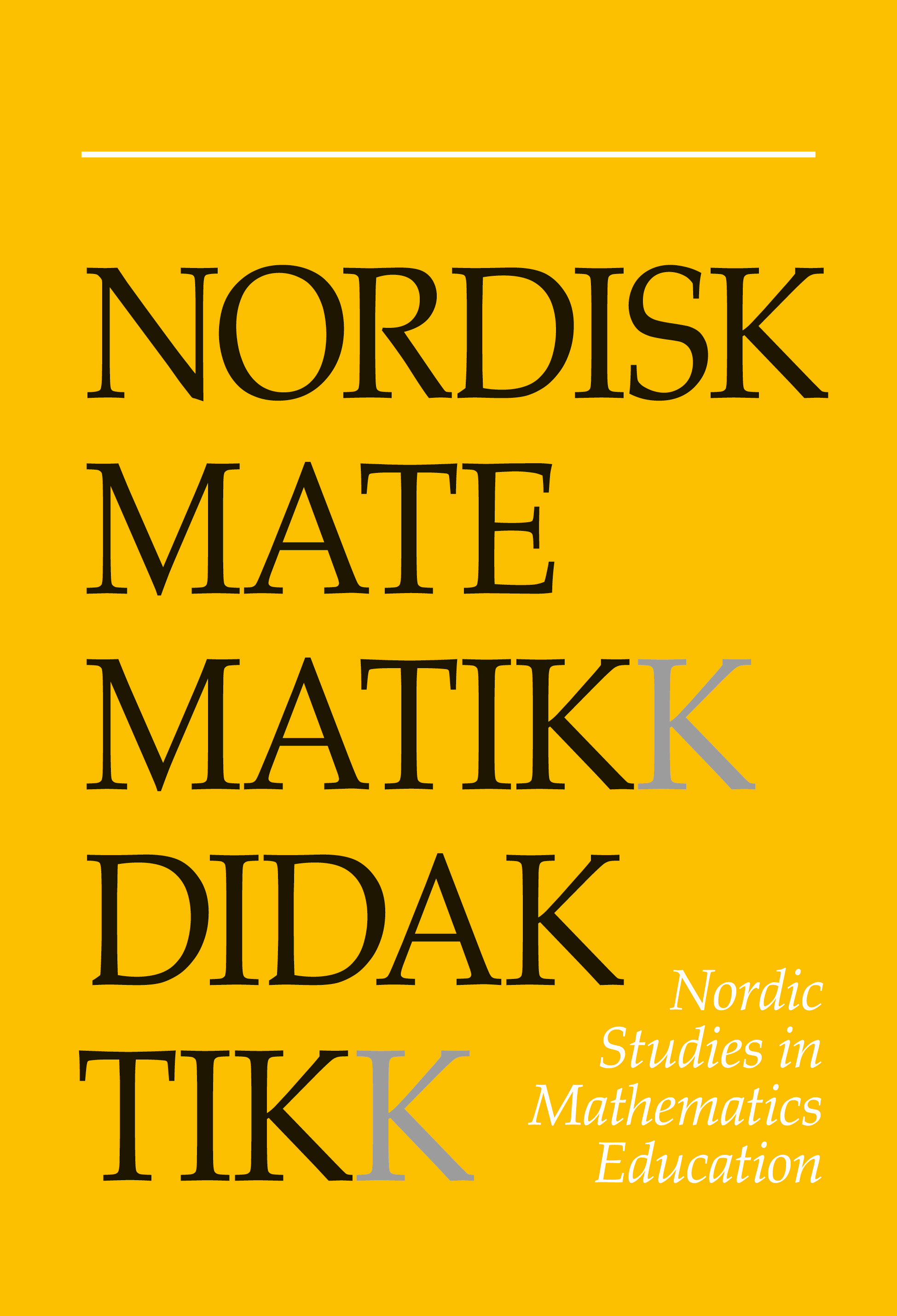Multilingual issues in Nordic mathematics education – What is achieved and where to go next?
DOI:
https://doi.org/10.7146/nomad.v23i3-4.148989Abstract
This Nomad special issue provides eleven highly interesting insights into current research and development projects in mathematics education on multilingual and multicultural issues. It shows the diversity of approaches currently adopted in the Nordic Countries with an impressing richness of perspectives and ideas. I am grateful to have had the opportunity to read and discuss the papers carefully as I learned a lot. In this commentary, I compare and connect the papers with each other and the international state of research and to suggest some directions for further research and deve-lopment. The commentary is structured in the following steps: Different implicit and explicit conceptualization of languages are identified in the articles (first section); different research approaches are summarized with a need to strengthen Design research (second section); and different instructional approaches for activating multiple language resources for mathematics learning and further enhancing both languages (third section).
References
Adler, J. (2001). Teaching mathematics in multilingual classrooms. Dordrecht: Kluwer.
Barton, B., Fairhall, U. & Trinick, T. (1998). Tikanga reo tātai: issues in the development of a māori mathematics register. For the Learning of Mathematics, 18 (1), 3-9.
Beacco, J.-C., Byram, M., Cavalli, M., Coste, D., Egli Cuenat, M. et al. (2010). Guide for the development and implementation of curricula for plurilingual and intercultural education. Strasbourg: Council of Europe. Retreived from http://www.coe.int/lang
Bishop, A. J. (1991). Mathematical enculturation. a cultural perspective on mathematics education. Dordrecht: Kluwer.
Cummins, J. (2000). Language, power and pedagogy: bilingual children in the crossfire. Cledevon: Multi lingual Matters. https://doi.org/10.21832/9781853596773
D'Ambrosio, U. (1985). Ethnomathematics and its place in the history and pedagogy of mathematics. For the Learning of Mathematics, 5 (1), 44-48.
Gerdes, P. (1996). Ethnomathematics and mathematics education. In C. K. Bishop A.J., Keitel C., Kilpatrick J. & C. Laborde (Eds.), International handbook of mathematics education (pp. 909-943). Dodrecht: Kluwer.
Gibbons, P. (2002). Scaffolding language, scaffolding learning. teaching second language learners in the mainstream classroom. Portsmouth: Heinemann.
Gravemeijer, K. & Cobb, P. (2006). Design research from a learning design perspective. In J. van den Akker, K. Gravemeijer, S. McKenney & N. Nieveen (Eds.), Educational design research: the design, development and evaluation of programs, processes and products (pp. 17-51). London: Routledge.
Meaney, T., Trinick, T. & Fairhall, U. (2012). Collaborating to meet language challenges in indigenous mathematics classrooms. Dordrecht: Springer. https://doi.org/10.1007/978-94-007-1994-1
Moschkovich, J. (2007). Using two languages when learning mathematics. Educational Studies in Mathematics, 64 (2), 121-144. https://doi.org/10.1007/s10649-005-9005-1
Moschkovich, J. (2013). Principles and guidelines for equitable mathematics teaching practices and materials for English language learners. Journal of Urban Mathematics Education, 6 (1), 45-57. https://doi.org/10.21423/jume-v6i1a204
Pimm, D. (1987). Speaking mathematically. Communication in mathematics classrooms. London: Routledge.
Planas, N. & Setati-Phakeng, M. (2014). On the process of gaining language as a resource in mathematics education. ZDM, 46 (6), 883-893. https://doi.org/10.1007/s11858-014-0610-2
Pöhler, B. & Prediger, S. (2015). Intertwining lexical and conceptual learning trajectories - a design research study on dual macro-scaffolding towards percentages. Eurasia Journal of Mathematics, Science & Technology Education, 11 (6), 1697-1722. https://doi.org/10.12973/eurasia.2015.1497a
Prediger, S. & Zindel, C. (2017). School academic language demands for understanding functional relationships: a design research project on the role of language in reading and learning. EURASIA Journal of Mathematics, Science and Technology Education, 13 (7b), 4157-4188. https://doi.org/10.12973/eurasia.2017.00804a
Prediger, S., Wilhelm, N., Büchter, A., Gürsoy, E. & Benholz, C. (2018). Language proficiency and mathematics achievement - empirical study of language-induced obstacles in a high stakes test, the central exam ZP10. Journal für Mathematik-Didaktik, 39 (3). https://doi.org/10.1007/s13138-018-0126-3
Schüler-Meyer, A., Prediger, S., Kuzu, T., Wessel, L. & Redder, A. (2017, online first). Is formal language proficiency in the home language required to profit from a bilingual teaching intervention in mathematics? A mixed methods study on fostering multilingual students' conceptual understanding. International Journal of Science and Mathematics Education. https://doi.org/10.1007/s10763-017-9857-8
Setati, M. (2005a). Power and access in multilingual mathematics classrooms. In M. Goos, C. Kanes & R. Brown (Eds.), Proceedings of the fourth International Mathematics Education and Society Conference (pp. 7-18). Gold Coast: Griffith University.
Setati, M. (2005b). Teaching mathematics in a primary multilingual classroom. Journal for Research in Mathematics Education, 36 (5), 447-466.
Sjöblom, M. (2015). Promoting student-to-student interactions in mathematics: a study in a multilingual upper secondary classroom (Licentiate thesis). Malmö: Holmbergs.
Smit, J. (2013). Scaffolding language in multilingual mathematics classrooms (PhD thesis). Utrecht: Freudenthal Institute.
Vertovec, S. (2007). Super-diversity and its implications. Ethnic and Racial Studies, 30 (6), 1024-1054. https://doi.org/10.1080/01419870701599465
Downloads
Published
How to Cite
Issue
Section
License

This work is licensed under a Creative Commons Attribution-NonCommercial-ShareAlike 4.0 International License.



